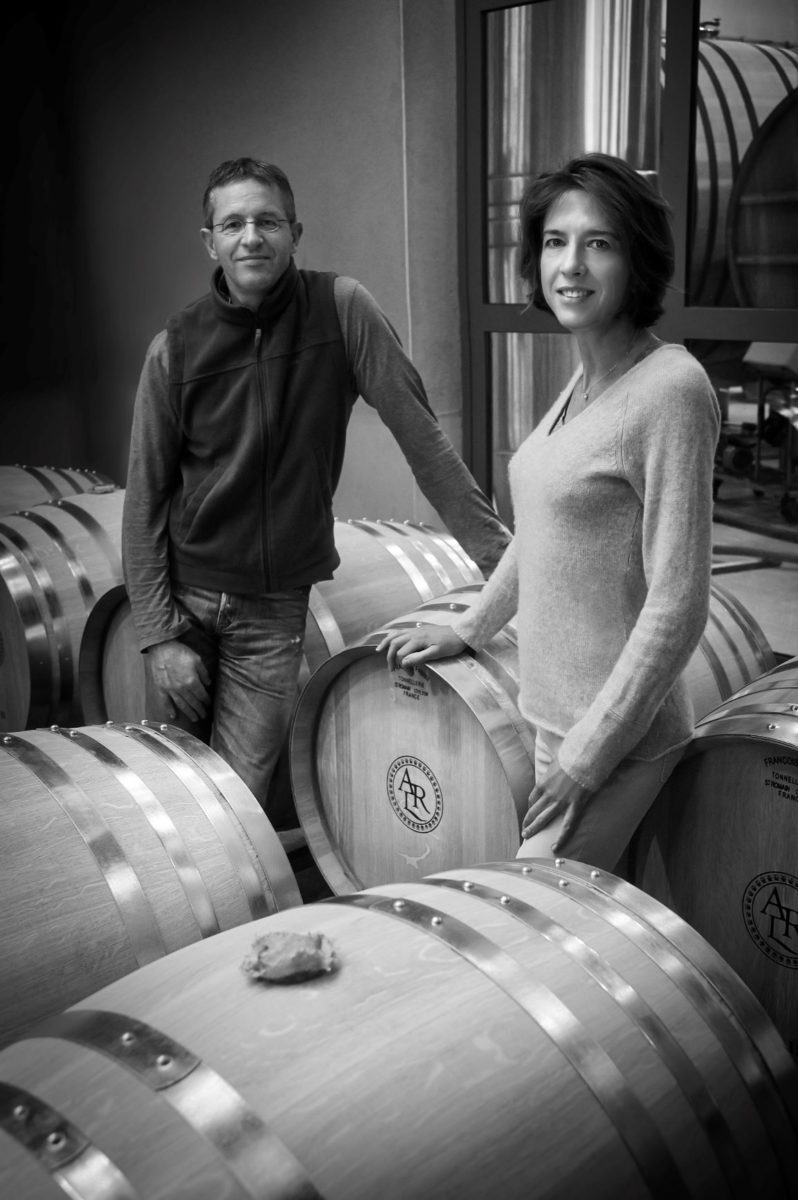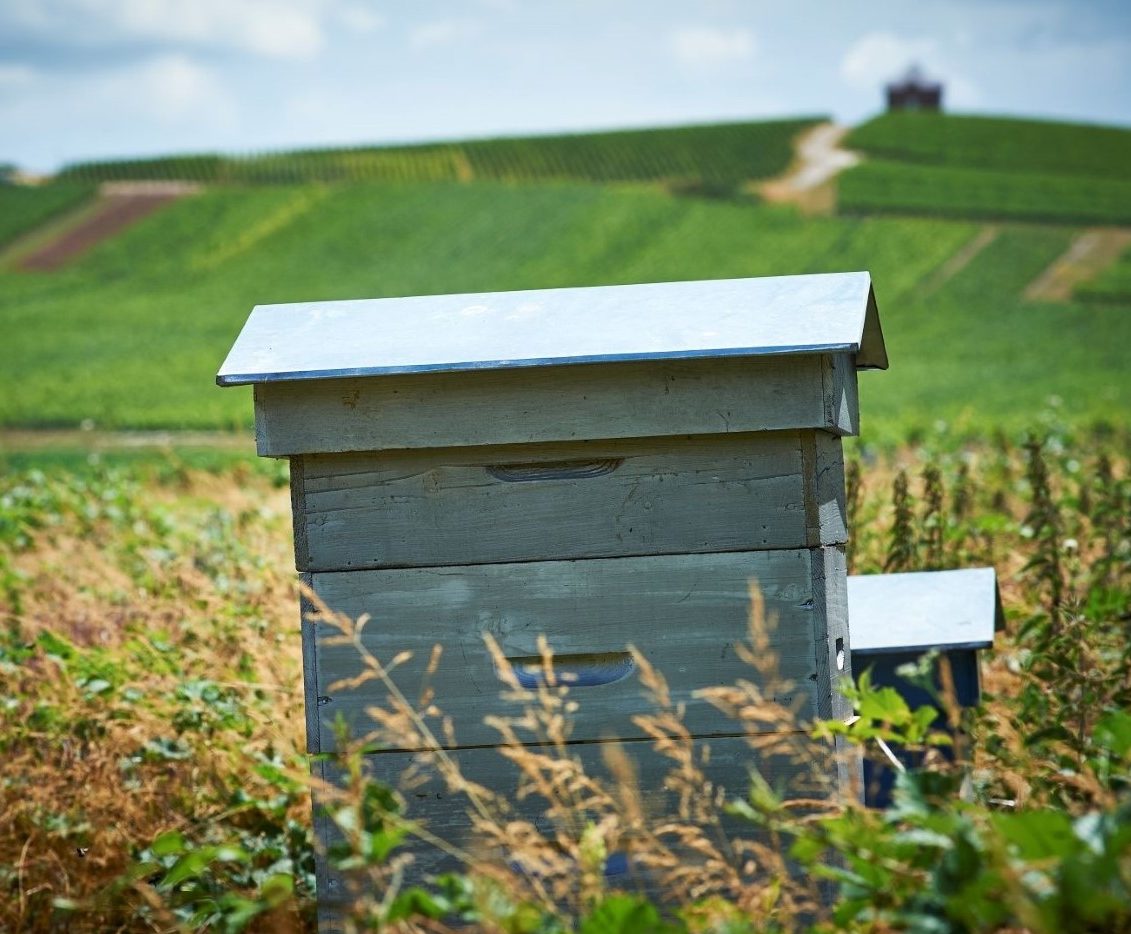
The story begins in 1870.
During the war, Joseph Graser flees the Germans and leaves his native Alsace and walks all the way to Epernay in Champagne, the place where his wife Alice was born. He dies suddenly in the street at the age of 44. His son Armand-Raphaël, who had dreamed of becoming a doctor, is forced by nature to become head of the family at a very young age and starts his professional life as a wine broker instead.
1870

In 1920, Armand-Raphaël starts to produce his own wines under the name of Champagne Graser, although he quickly changes the name of his house to AR Lenoble. With the armistice still fresh in mind, he decided that a name with German connotations was perhaps not the best idea. He creates his own brand called « AR Lenoble », combining his initials « AR » with « Lenoble » as a tribute to the nobility of the wines of Champagne.
1920

4 générations vont alors se succéder toutes porteuses de valeurs fortes défendues avec engagement et dévouement.
Anne et Antoine Malassagne, frère et sœur, récupèrent la maison familiale. Jeunes et soucieux d’innover dans ce monde traditionnel, ils n’ont cesse de vouloir améliorer la qualité des Champagnes. Depuis 2010, c’est une réserve en magnum sous liège qui se constitue progressivement dans les caves AR Lenoble pour participer aux futurs assemblages. C’est ainsi qu’en 2014, le fruit de ce travail de longue haleine fait son apparition sous le nom « MAG ».
1993

1870
The story begins in 1870.
During the war, Joseph Graser flees the Germans and leaves his native Alsace and walks all the way to Epernay in Champagne, the place where his wife Alice was born. He dies suddenly in the street at the age of 44. His son Armand-Raphaël, who had dreamed of becoming a doctor, is forced by nature to become head of the family at a very young age and starts his professional life as a wine broker instead.
1920

In 1920, Armand-Raphaël starts to produce his own wines under the name of Champagne Graser, although he quickly changes the name of his house to AR Lenoble. With the armistice still fresh in mind, he decided that a name with German connotations was perhaps not the best idea. He creates his own brand called « AR Lenoble », combining his initials « AR » with « Lenoble » as a tribute to the nobility of the wines of Champagne.
1993

4 generations will then succeed each other each one of them promising to keep the domaine in the family as well as completely independent, and each one of them armed with strong convictions defended with commitment and devotion.
Today, the domaine is managed by the sister and brother team of Anne and Antoine Malassagne. For over 20 years, guided by their convictions, they have shaped the wines of Champagne AR Lenoble. By deciding not to accept tempting takeover bids along the way that could have allowed for easier and more accelerated development prospects, they have been able to preserve their freedom. This cherished independence is a guarantee of quality, permitting them to constantly strive to do even better while not having manage demands for immediate return-on-investment or the whims of shareholders.
The 18 houses of vineyards owned by the house are located on the most beautiful hillsides of Champagne.
In Chouilly, one of the 6 Grand Cru villages located on the Côte des Blancs.
In Bisseuil, a Premier Cru village located on the Montagne de Reims. In Damery, a village in the Marne Valley known for its exceptional meunier. We also work with a handful of growers in the Epernay region in order to complete the palette of wines used to craft the champagnes of AR Lenoble
The 18 houses of vineyards owned by the house are located on the most beautiful hillsides of Champagne.
In Chouilly, one of the 6 Grand Cru villages located on the Côte des Blancs.
In Bisseuil, a Premier Cru village located on the Montagne de Reims. In Damery, a village in the Marne Valley known for its exceptional meunier. We also work with a handful of growers in the Epernay region in order to complete the palette of wines used to craft the champagnes of AR Lenoble
Partant du principe qu’un bon vin est d’abord un bon raisin, une importance toute
particulière est accordée au travail de la vigne. Dans un climat humide et froid lié à la situation très septentrionnale de la Champagne,
une approche raisonnée favorisant la biodiversité et la vie des sols est privilégiée.
The rows of vines are planted with grass between them to reduce yields, plowing ensures that the roots of the plants extend deep into the chalk,
the earth is aerated so as to develop the nutrients necessary for the perfect development of grape clusters.
Since 2012, the vineyards of AR Lenoble have been certified HVE (Haute Valeur Environnementale).
Beehives were introduced into the vineyards of the domaine nearly a decade ago, a testament to our commitment to biodiversity.

Since 2012, the vineyards of AR Lenoble have been certified HVE (Haute Valeur Environnementale).
Beehives were introduced into the vineyards of the domaine nearly a decade ago, a testament to our commitment to biodiversity.
